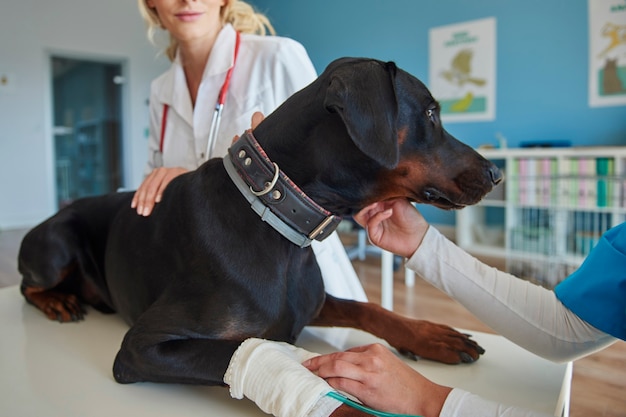The Role of Cat Rehabilitation in Managing Feline Arthritis


Understanding Feline Arthritis: Symptoms and Diagnosis
Feline or cat arthritis is a condition many cat owners might not catch right away. It’s all about joint pain that gets worse over time. Cats are great at hiding discomfort, but there are signs you can watch for. These include less jumping, limping, or a stiff walk, especially after resting. Your cat might also seem less eager to play and could show a change in behavior, like being more grumpy.
When it comes to diagnosing this pain in the joints, a vet will check your cat’s history and do a physical exam. They might need to take X-rays or do other tests to see the arthritis clearer. It’s not just an “old cat” problem. Younger cats can have it too, because of injuries or weight issues. Understanding your cat might be hurting is the first step. Then, you and your vet can talk about making your furry friend feel better.

The Importance of Cat Rehabilitation for Arthritis Management
When your cat gets arthritis, their joints swell and get stiff, making it hard for them to move around like they used to. Cat rehabilitation plays a crucial role in managing this condition, offering pain relief and improving quality of life. Think of it as physical therapy for your furry friend, tailored to help them stay as active and pain-free as possible.
In rehabilitation, therapists use exercises that are gentle yet effective, focusing on reducing pain and swelling in the joints. They might also use treatments like massage, laser therapy, or even underwater treadmill. Each cat gets a plan made just for them, considering what they need and how severe their arthritis is.
Why is this so important? Firstly, it helps maintain muscle strength, preventing those muscles from wasting away due to inactivity. Strong muscles support the joints better. Secondly, it boosts overall flexibility and movement, so your cat can still jump and play, maybe not as high or as much, but enough to keep them happy. Finally, staying active helps manage weight. Extra weight puts more pressure on those sore joints, so keeping your cat slim is a key part of arthritis care.
Starting rehabilitation early can make a huge difference. It’s not just about adding days to their life but adding life to their days. Watching your cat move more easily and with less pain is the goal, and rehabilitation gives them the best shot at achieving it.
Types of Cat Rehabilitation Techniques
There are several techniques used in cat rehabilitation to manage arthritis. First up, we have physical therapy. Think of it as exercise tailored for your feline, designed to increase flexibility and muscle strength while reducing pain. Then there’s the underwater treadmill, where cats exercise in water. The water supports their body, making it easier for them to move without stressing their joints. Laser therapy is another tool in the toolbox. This involves using light to stimulate cell regeneration and increase blood flow, which helps in reducing pain and inflammation. Shockwave might sound a bit out-there, but it’s been shown to help some cats. By targeting specific points on the body with focused sound waves, it can relieve pain and improve mobility. Finally, manual therapy can help loosen tight muscles and improve circulation, providing comfort to arthritic cats. Each of these techniques has its place and, depending on your cat’s specific situation, a vet or a cat rehabilitation specialist can recommend the best approach.
How Physical Therapy Benefits Cats with Arthritis
Physical therapy for cats with arthritis can be a game-changer. Just like in humans, it helps improve joint movement and strength. This means your cat can move more easily and with less pain. By reducing stiffness and increasing flexibility, physical therapy can make daily movements less of a struggle for your feline friend. It’s not just about easing the pain, though. This kind of therapy can also boost overall well-being. Your cat might start feeling more energetic and even improve its mood because moving around becomes less of a chore. Plus, when your cat is active and engaged, it’s less likely to pack on extra pounds, which can worsen arthritis symptoms. In short, physical therapy offers a holistic approach to managing arthritis in cats, tackling not only the physical symptoms but also improving the quality of life.
The Role of Underwater Treadmill in Feline Rehabilitation
With the underwater treadmill, exercises can be done in water. It’s a gentle way to help cats with arthritis move better. Since water supports the body, cats can move with less pain. This means they can work their muscles and joints without too much stress. Hydrotherapy in the underwater treadmill can improve a cat’s muscle strength, reduce pain, and even help them slim down if they’re overweight. This water treadmill is made just for animals. Not all therapists offer hydrotherapy, but it’s worth asking about. It’s a safe and effective method, especially for cats that don’t like or can’t handle more intense forms of exercise due to their arthritis.
Creating an Effective Cat Rehabilitation Plan
Creating an effective cat rehabilitation plan starts with understanding your cat’s needs. First, consult your vet to confirm if your cat has arthritis and discuss the best rehab plan tailored to their condition. Key components of cat rehab include gentle exercise, weight management, and environmental adaptations. Start with short, daily exercises to help your cat stay mobile without overdoing it. Keeping your cat at a healthy weight reduces stress on their joints, significantly easing pain. Finally, modify your home to make it cat-friendly—add ramps for easier access to high places, provide soft bedding, and keep essentials within easy reach. Every cat is unique, so you might need to adjust this plan to find what works best for your furry friend.
Diet and Nutrition in Managing Cat Arthritis
Managing cat arthritis isn’t just about medications; what your cat eats plays a huge role too. Obesity can make arthritis worse, so keeping your cat at a healthy weight is key. Less weight means less pressure on those achy joints. High-quality food that’s rich in omega-3 fatty acids, like fish oils, can help reduce joint inflammation and pain. It’s also smart to pick food that’s high in antioxidants to support general health. You might think about adding a joint supplement designed for cats to their diet. These often contain glucosamine and chondroitin, which are friends to healthy joints. But remember, changes to your cat’s diet should be gradual and under a vet’s guidance. Feeding your cat the right way can really help ease the ache of arthritis and keep them hopping onto your lap for years to come.
Supplements and Medications: Supportive Treatments Alongside Rehabilitation
In managing feline arthritis, combining supplements and medications with physical rehabilitation gives your cat the best shot at comfort and mobility. Think of it as a team where each player has a vital role. On one side, we have supplements. These often include glucosamine and chondroitin, which are like building blocks for your cat’s joints. They help repair and protect. Omega-3 fatty acids are another key player, working tirelessly to reduce inflammation and ease pain.
Then there’s the medication squad. Pain relievers and anti-inflammatory drugs step in to give immediate relief. This makes your cat more comfortable and able to move better. It’s like knocking down the biggest hurdles in their path, making it easier to get around.
But here’s the kicker: using these treatments along with rehabilitation exercises is what makes all the difference. It’s like combining good nutrition with exercise in humans. One helps from the inside, and the other from the outside. Together, they boost your cat’s strength, flexibility, and overall well-being, making arthritis something manageable rather than a full-stop roadblock.
Success Stories: Real-life Examples of Cat Rehabilitation
Many cats bounce back from the shadow of arthritis through rehabilitation. Take Whiskers, a 10-year-old tabby who could barely jump onto the sofa. After 8 weeks of regular physical therapy and a diet adjustment, Whiskers now leaps with ease. Then there’s Luna, a Siamese who suffered from stiff joints. Luna’s owners introduced low-impact exercises and acupuncture into her routine. Three months later, Luna was climbing stairs like her younger self. These stories prove that with the right care, cats can overcome arthritis. It’s not just about managing pain; it’s about giving them their freedom back.
Continuing Care: Managing Feline Arthritis Long-Term
Managing feline arthritis in the long term is about keeping your cat comfortable and pain-free. It’s not just a one-time treatment; it’s a lifetime commitment to your furry friend. First, make sure you’re on top of your cat’s vet visits. Regular check-ups help adjust treatments as needed. Pain management often involves medication, but doses may change over time. Keep an eye on your cat’s weight. Extra pounds mean extra pressure on those aching joints, so maintaining a healthy weight is crucial. Diet plays a big role here. Some foods are specially formulated to support joint health, ask your vet for recommendations.
Regular, gentle exercise helps keep joints flexible. But remember, it’s not about marathon sessions of play—think more like short, easy activities your cat enjoys. And let’s talk about your home. A few simple changes can make a big difference. Think about adding ramps or steps to help your cat reach their favorite spots without the pain of jumping. Keep essentials like food, water, and litter boxes easily accessible to minimize strain.
In essence, managing feline arthritis long-term boils down to regular vet care, weight management, proper diet, gentle exercise, and making your home more arthritis-friendly. It’s about watching, adjusting, and showing your cat love through thoughtful care.




